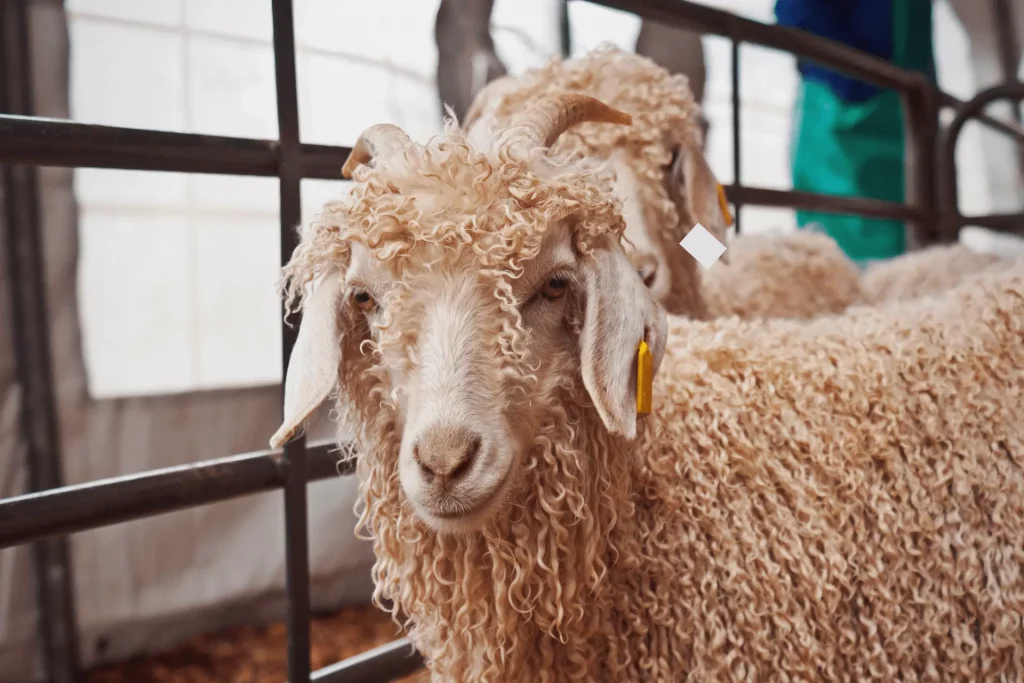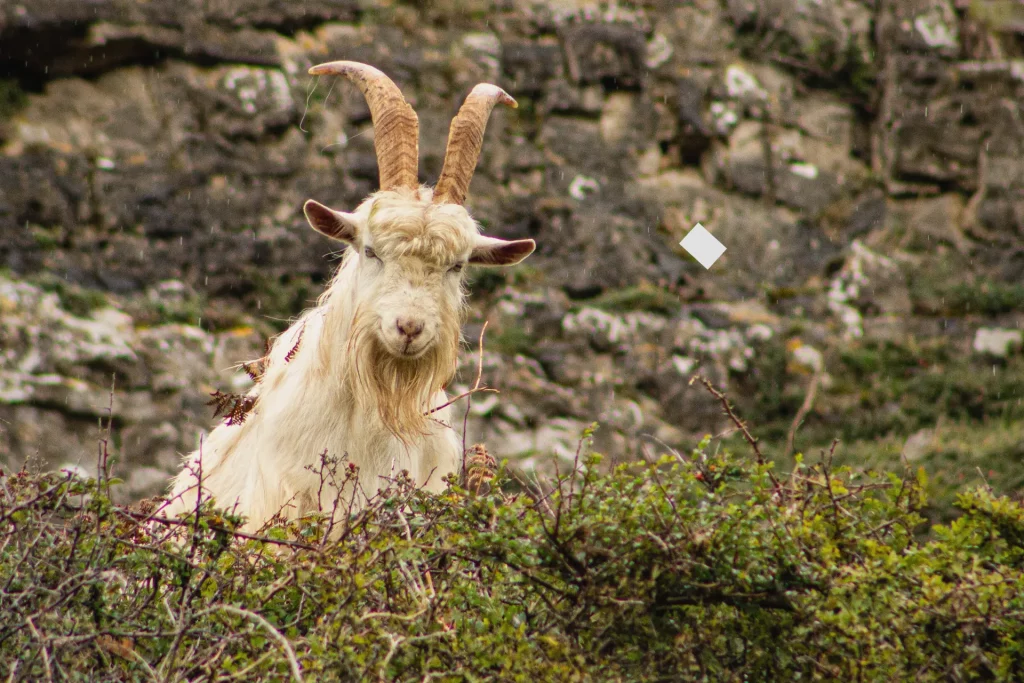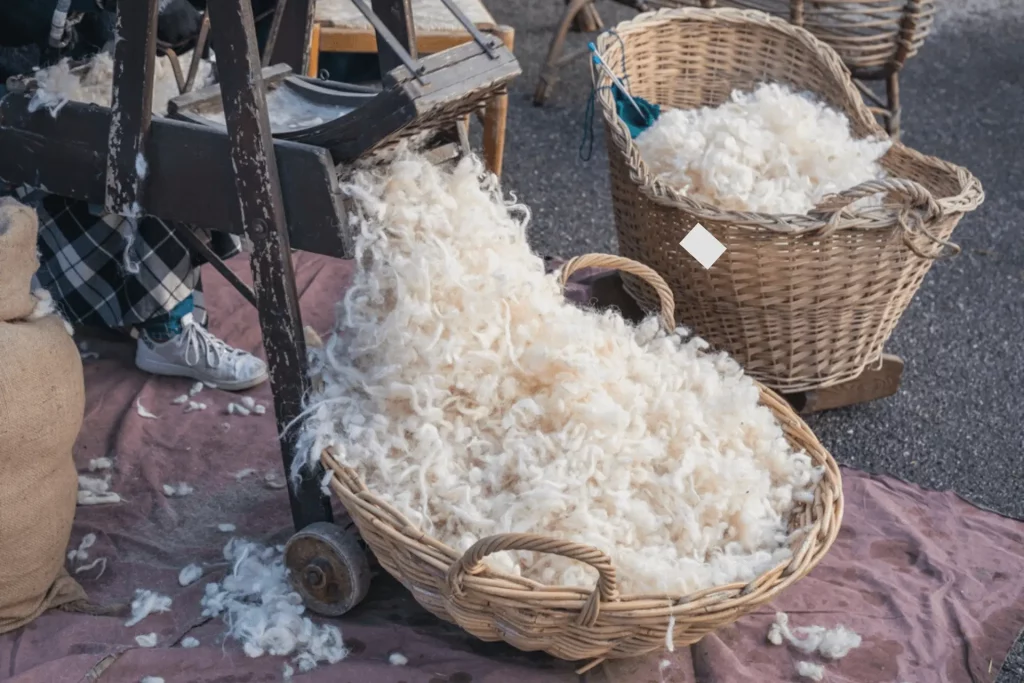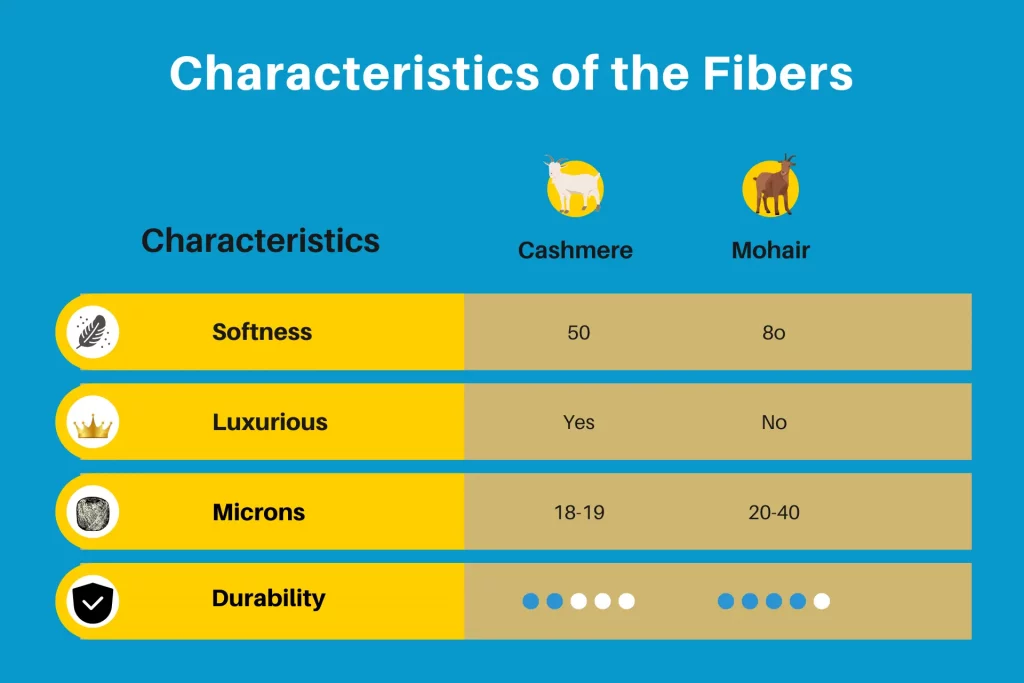The arrival of autumn and the impending arrival of winter naturally direct our thoughts toward discovering new methods by which we can remain warm. Even though you have bulky socks and sweaters, such things aren’t enough to keep you warm when the evenings are brisk.
Throwing on a plush wool blanket or throw is one of the most effective methods to keep warm. When there is such a wide selection of throws available, it can be a little bit daunting to try to locate the one that is most suited for both you and your house. However, we are here to lend a hand.
One of the most important things to consider is the kind of wool that should be used. Wool and mohair, two of the most sumptuous varieties, are perfect for producing throws and blankets. As a result, this article’s purpose is to answer the following two questions: what is mohair, and what is cashmere? In addition, we will discuss some of the distinctive traits and advantages of each option.
Table of Contents
What is Mohair?

First things first, let’s have a look at the definition of mohair. Mohair is a type of fabric that is created from the hair of an Angora goat. The Anatolia Plains in Turkey are the country’s birthplace for the Angora goat breed. Mohair is an Arabic word that derives from mukhayyar, which means “the fabric of goat hair.” Mohair is derived from this word.
Angora goats weren’t brought to Spain and France for the first time until the 16th century, and they weren’t brought to the United States for the first time until 1849. Before these eras, the goats were held with extremely high respect and closely guarded to maintain their unique coats.
If you’ve ever touched mohair, you might be able to appreciate why the people of Turkey were so possessive of their Angora goats. Mohair is a prized commodity in the fashion industry. Mohair is a luxury natural fabric that looks and feels very much like silk due to its silk-like smoothness and suppleness.
What is Cashmere?

It is well knowledge that cashmere is an opulent, supple woolen fabric that radiates an air of refinement. The simple act of wrapping a cashmere scarf around your neck can instantly elevate your appearance to one that is more sophisticated and dignified.
But when you enjoy your premium cashmere sweater in the shade of ochre that is your favorite, give some attention to where cashmere truly originates. This fact may come as a complete surprise to you, yet cashmere wool originates from the cashmere goat.
A cashmere goat, if you must know the answer. You may check it out on Google if you don’t believe us. The exact sections of the cashmere goat’s fleece from which the cashmere wool is harvested give the fleece its luxuriously soft texture.
Cashmere cannot be created by spinning together random strands of fleece. Because it is crafted from the plush undercoat of these unique goats, this material is considerably more luxurious than that made from sheep’s wool. This is because it takes more goats to produce the same amount of goat’s wool as a single sheep, unlike sheep’s wool.
Comparison of Mohair Vs. Cashmere: Important Distinctions

Cashmere and mohair are two luxurious fabrics often associated with expensive finery and even the rich (historically, anyway). Because of the striking similarity between yarn and fabric, it is simple to get the two mixed up when one is viewed in isolation from the other.
However, the two forms of hair couldn’t be more unlike one another. They are also hypoallergenic, making them a more comfortable alternative to wool’s uncomfortable feel. Other features they share include the fineness of their strands, a silky shine, incredible insulating capabilities, good moisture-wicking properties, and hypoallergenic.
In addition, they are crafted from the same type of animal, although of a distinct breed of that animal. If you were curious, cashmere and mohair are not different kinds of wool but different kinds of animal hair.
The question now is, what differentiates one from the other? The following are the key distinctions between cashmere and mohair:
1. Harvesting Procedure:

The process by which cashmere and mohair are extracted from Angora goats is very unlike one another.
Shears strip the goats of their mohair, much like shears strip sheep of their wool. However, Angora goats have two different shearing seasons: one in the spring and one in the fall. The mohair is cleaned, carded, and occasionally combed like wool.
On the other hand, cashmere hair is only ever picked once a year, in the springtime. (As soon as the temperature rises, cashmere goats naturally begin shedding their winter coats.)
This hair is combed out throughout a period, which is typically two weeks. After that, it undergoes collection, cleaning, and processing. During the combing procedure, only the finest undercoat hairs are collected.
Many farmers, however, choose to shear their Cashmere goats so that they may complete the task more rapidly and with less effort. The consequence is that the topcoat and the undercoat get intertwined, resulting in a poorer grade cashmere.
2. Where the Hair Came From:
The fibers known as mohair and cashmere come from various goat breeds rather than sheep. Mohair is a fiber that originates from the Angora goat. Most of the world’s supply of mohair comes from South Africa, the leading producer and accounts for about half of the supply.
On the other hand, cashmere is made from the hair of a goat known as a Kashmiri or a cashmere goat. China and Mongolia are responsible for the production and supply of up to two-thirds of the world’s cashmere.
3. Characteristics of the Fibers:

The fiber profile is another distinction that may be made between cashmere and mohair. Both are characterized as being delicate and smooth, although to varying degrees. The softest and most luxurious of all fibers is cashmere.
The undercoat offers the finest fibers, with a strand diameter ranging between 18 and 19 microns. Pieces that are exceptionally fine, ultra-soft, and highly lightweight because of the extremely thin fibers feel delightful against the skin despite their incredible lightness. In addition to that, its ability to insulate against heat is remarkable.
Mohair is a soft material, although it does not compare in softness to cashmere. The lengthy undercoat has a well-defined curl pattern, and its texture is as smooth as silk.
The process of sheering, on the other hand, screws this up. The texture of the gear coat is altered as a result of this soft hair being entangled with the straight, coarse hairs of the gear coat.
Its fibers have a diameter of between 20 and 40 microns, making them coarser than cashmere fibers. Because of this, the more delicate and supple fibers are saved for garments, whilst the more robust and Durable fibers are used for carpeting and upholstery.
Mohair is far more durable than the other option. It contains much longer staples, which gives it an unbelievable amount of strength compared to cashmere, which, although more delicate than other fibers, is still rather robust.
4. Affordability:
Cashmere and mohair are two types of luxurious materials that are typically associated with more upscale customers. On the other hand, Mohair is not nearly as rare as cashmere and is gradually making its way into the popular fashion scene. This is not the first time this has happened.
Cashmere is on a very another price scale than mohair, being far more costly. This is partly because it is of a higher grade and partly because there is a restricted quantity, making it a rare jewel.
Mohair is only collected once a year since, as we’ve mentioned, only around a quarter of the hair is used in any product. Considering that it takes the combined weight of up to four goats’ haircuts to manufacture just one sweater, you can see how the insanely high price tags are justified.
There are certain brands of cashmere available at more affordable prices. These companies typically use mixes or a poorer quality of cashmere. Although the fibers will be coarser, the quality is still considered excellent. However, customers still believe they are paying too much despite this decreased pricing.
Mohair and cashmere are two luxurious materials that are quite comparable in their attributes and characteristics. Cashmere is a more luxurious option for consumers than mohair since it is finer, softer, and more costly than mohair. This is the primary distinction between the two types of fiber. Mohair is an option that is available at a lower cost.
Mohair Benefits:
- It is important not to mix mohair, which comes from angora goats, with angora fabric made from the plush fur of angora rabbits. Mohair can only be obtained from angora goats.
- Mohair is a fiber believed to be a luxury because it has a beautiful shine and is very soft to the touch. The fact that wool throws are not only scratch-free but also soft and warm makes them an ideal material for this use.
- Mohair is hypoallergenic because of its distinctive molecular structure. This implies that even individuals sensitive to wool are not likely to have an allergic reaction to mohair. It should come as no surprise that mohair is one of the most sought-after materials in the world for producing blankets and throws since it is warm and soft to the touch.
Cashmere Benefits:
- Cashmere is a special and luxurious kind of wool. Cashmere is perfect for persons who have sensitive skin and for youngsters since it does not prickle and is exceptionally soft and warm.
- Since cashmere wool has excellent insulating properties without being cumbersome, it is an excellent choice for wear throughout any time of year. This all-natural fabric will keep you warm when the temperatures are low and protect you from becoming too hot when the mercury starts to climb.
- Throws made of lightweight cashmere are convenient to travel since they fold into surprisingly small spaces and weigh relatively little overall. Put it in your purse and take it with you if you’re going out to eat on a chilly evening, or pack it for a quick trip to the city during the winter holidays.
Frequently Asked Questions:
Cashmere or mohair—which luxurious fiber is superior?
Cashmere wool offers exceptional insulating properties while being unobtrusive, making it an excellent choice for wear throughout any time of year. This all-natural fabric will keep you warm when the temperatures are low and protect you from becoming too hot when the mercury starts to climb.
Does wearing mohair cause itching sensations?
Compared to most other wool fibers, mohair is far less irritating. It should feel extremely gentle to the touch, warm, and comforting to most individuals. On the other hand, given that it is derived from animals, some people may be allergic to it.
Is mohair a suitable material for sweaters?
Mohair is one of the natural fibers that is considered to be quite valuable. It produces various items, including plush sweaters and accessories, carpets, and even upholstery.
Cashmere or mohair: Which Is the More Expensive Fiber?
Mohair and cashmere are two luxurious materials that are quite comparable in their attributes and characteristics. Cashmere is a more luxurious option for consumers than mohair since it is finer, softer, and more costly than mohair. This is the primary distinction between the two types of fiber.
Why is mohair considered to be so exceptional?
The fiber from mohair is long, shiny, robust, tough, and long-lasting. It is similar to wool in that it can absorb and keep moisture and has an excellent affinity for dyestuffs. On the other hand, it is more susceptible to chemicals. When exposed to heat, sunshine, moth larvae, and the effects of age, it behaves similarly to how wool does.
Is mohair a warm material?
Mohair is a fairly insulating fabric and may help keep consumers relatively warm even though it is a lightweight fabric. Because of this, it is frequently used in manufacturing coats, sweaters, or socks. Mohair can also absorb moisture, preventing persons from experiencing an overly clammy sensation.
Bottom Line:
Cashmere and mohair are both materials commonly used in the fashion industry, and both have a reputation for being high-end options. All of these textiles are utilized in the manufacturing of some of the most high-quality winter apparel that can be found.
On the other hand, these textiles are different in the manner in which they are produced and the quality they display. We hope that you found this information to be informative. When it comes to determining which fabric is ideal for you, we hope that you can make an even more well-informed decision now that you have a better understanding of the differences between cashmere and mohair.


1 Comment
I have four cashmere jumpers (Am sweaters) and I will never buy another. Unless you brush them every time you wear them, they go all bobbly and unsightly. Still soft, but a lot of work